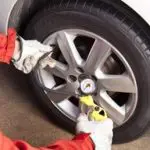Knowing When to Change Your Tires
As a car owner, it's essential to understand the significance of tire maintenance and when to change your tires. Tires play a critical role in ensuring a safe and smooth ride. Neglecting them can lead to various issues, including reduced traction, increased braking distances, and even a potential blowout while driving. This blog post will review the multiple signs indicating it's time to replace your tires.
- Tread Depth
One of the most straightforward ways to determine if your tires need to be changed is to check the tread depth. Tires have treads that help grip the road and improve handling in various weather conditions. When the treads become worn down, they lose their ability to effectively grip the road, making it more challenging to handle the car in wet or slippery conditions.
To check your tire's tread depth, insert a quarter into the tread with the head facing down. If you can see the top of his head, it's time to replace your tires. Another method is to use a tire tread depth gauge, a more precise way to measure the tread depth.
- Age
Tires have a lifespan; after a certain amount of time, they need to be replaced, regardless of their tread depth. The general rule of thumb is to replace your tires every six years, but this can vary depending on the type of tire and driving conditions. Tires frequently exposed to extreme temperatures or UV rays can deteriorate more quickly and need to be replaced sooner.
- Cracks and Bulges
As tires age, they can develop cracks, which can cause the tire to fail. If you notice any cracks on your tires, it's a sign that it's time to replace them. Similarly, bulges or blisters on the tire's surface indicate that the tire's internal structure has been compromised and needs to be replaced as soon as possible.
- Vibration or Unusual Noise
If you experience any vibration or unusual noise while driving, it's a sign that something is wrong with your tires. Unbalanced tires, worn-out suspension components, or worn-out tires can cause this. If the problem persists, it's best to have your tires inspected by a professional to determine the cause and make any necessary repairs.
In conclusion, keeping an eye out for these signs and regularly checking your tire's tread depth and age can help ensure that your tires are in good condition and ready to perform when needed. Please don't wait until it's too late; replace your tires as soon as you notice any signs of wear and tear. Your safety and the safety of those around you on the road depend on it.

